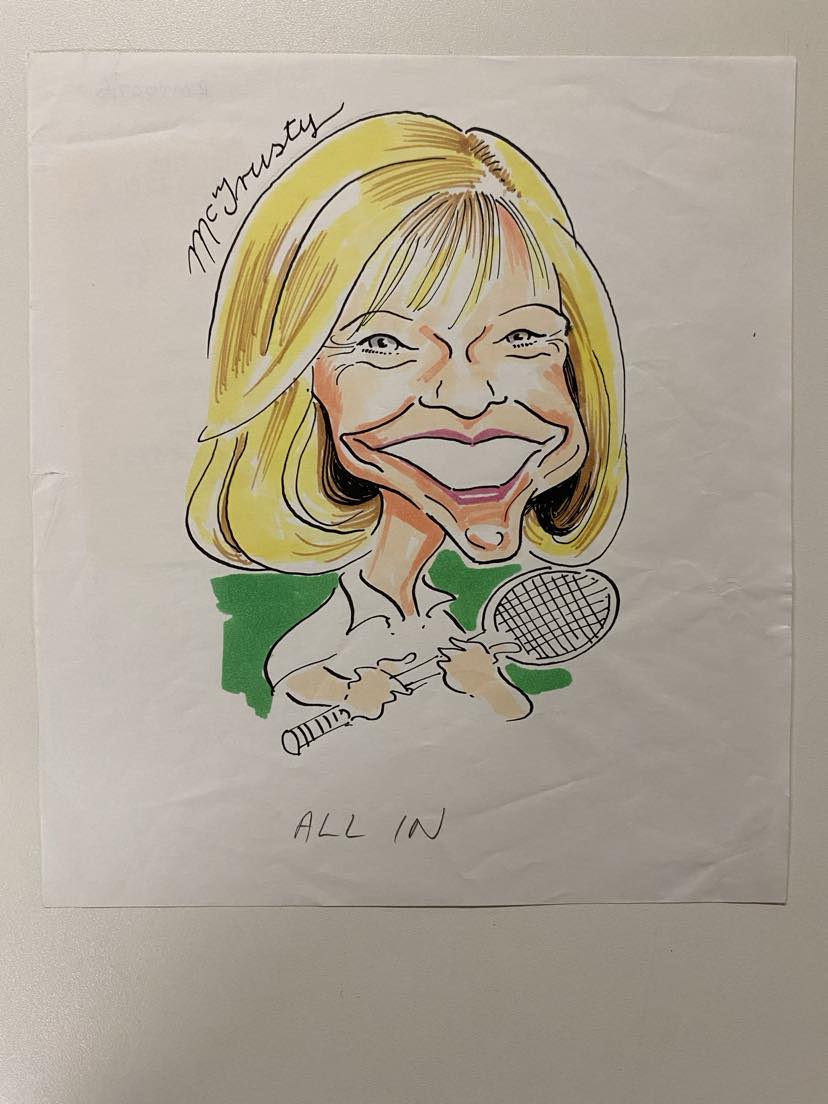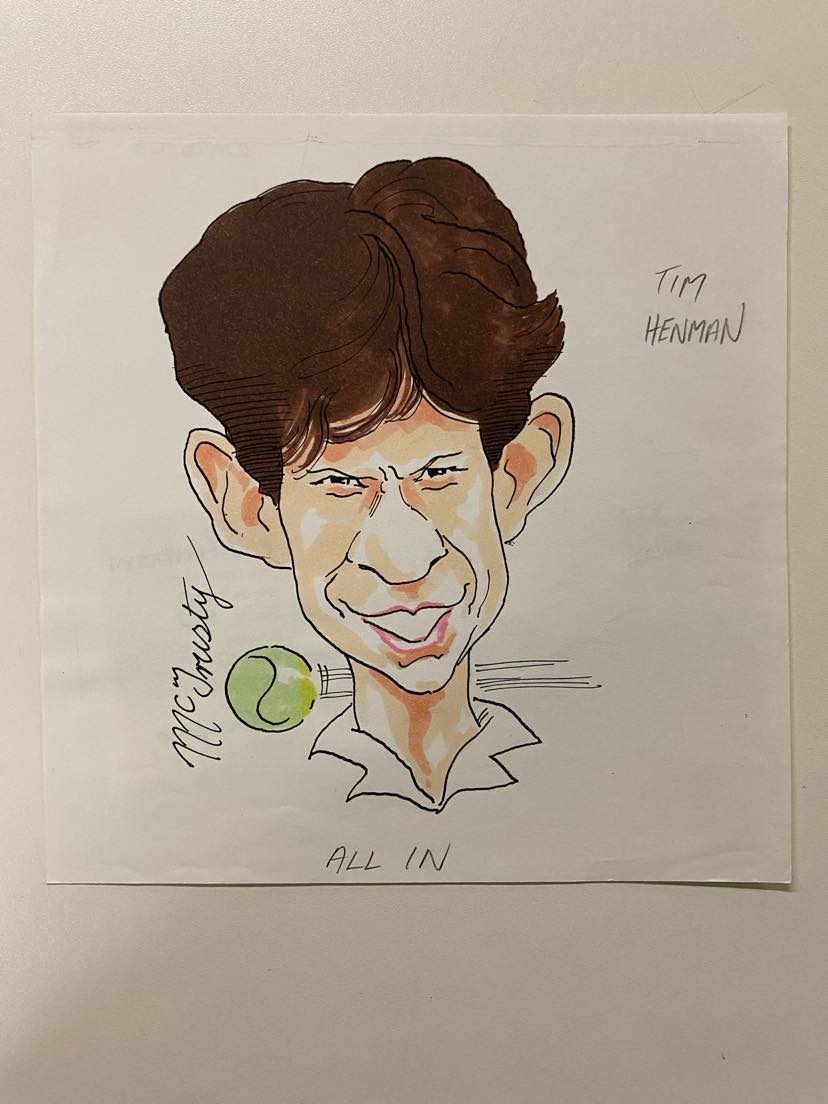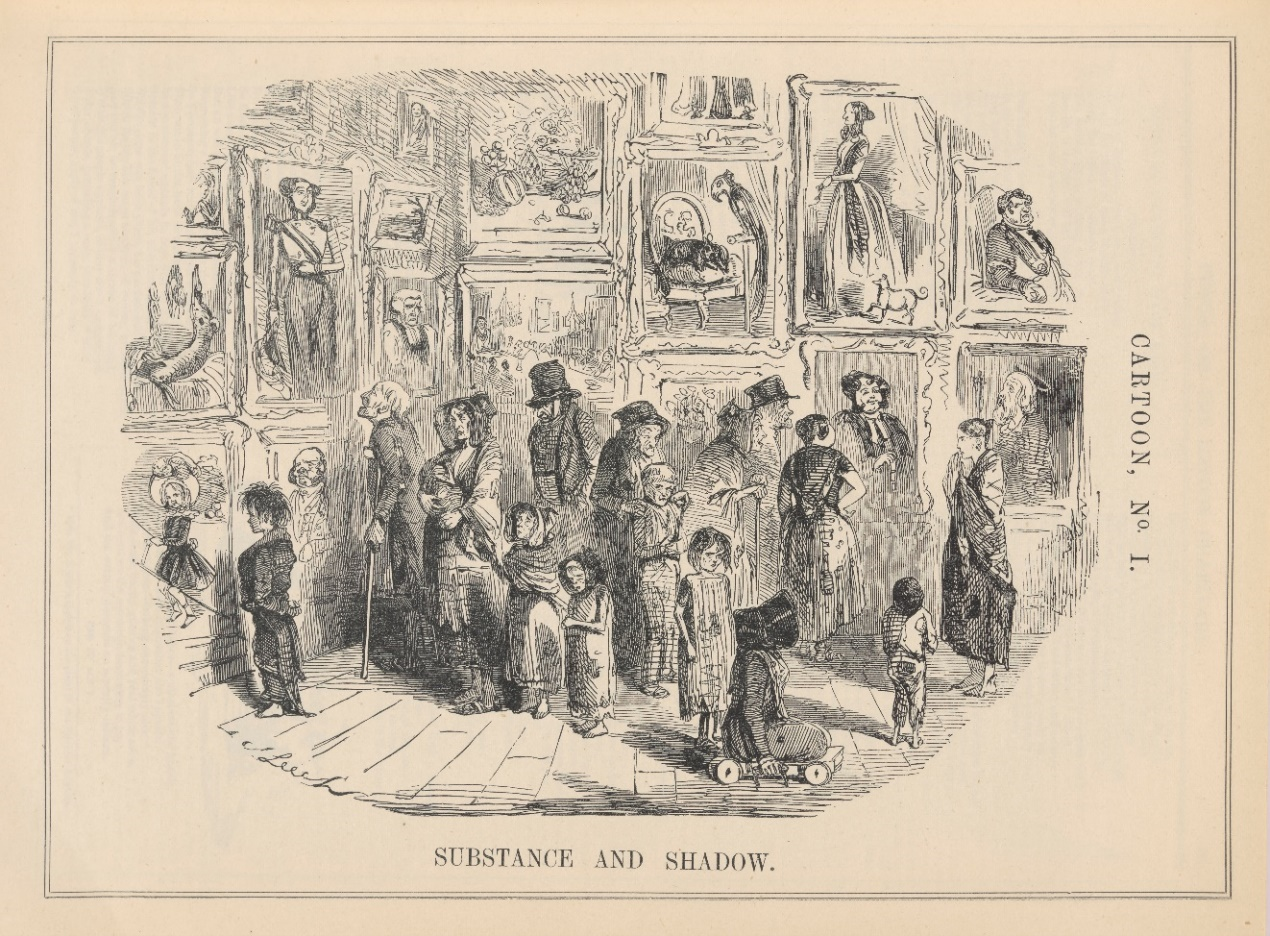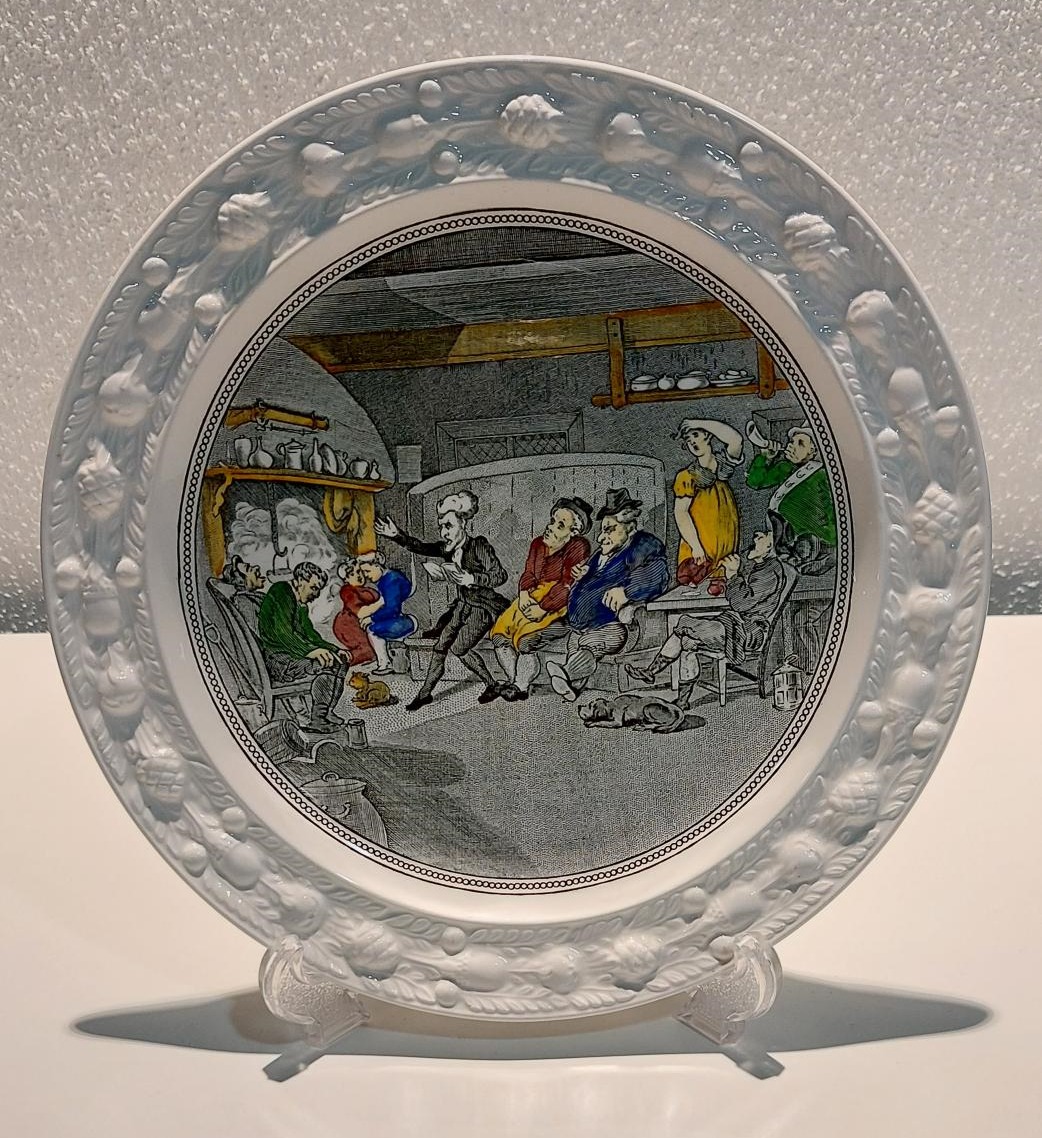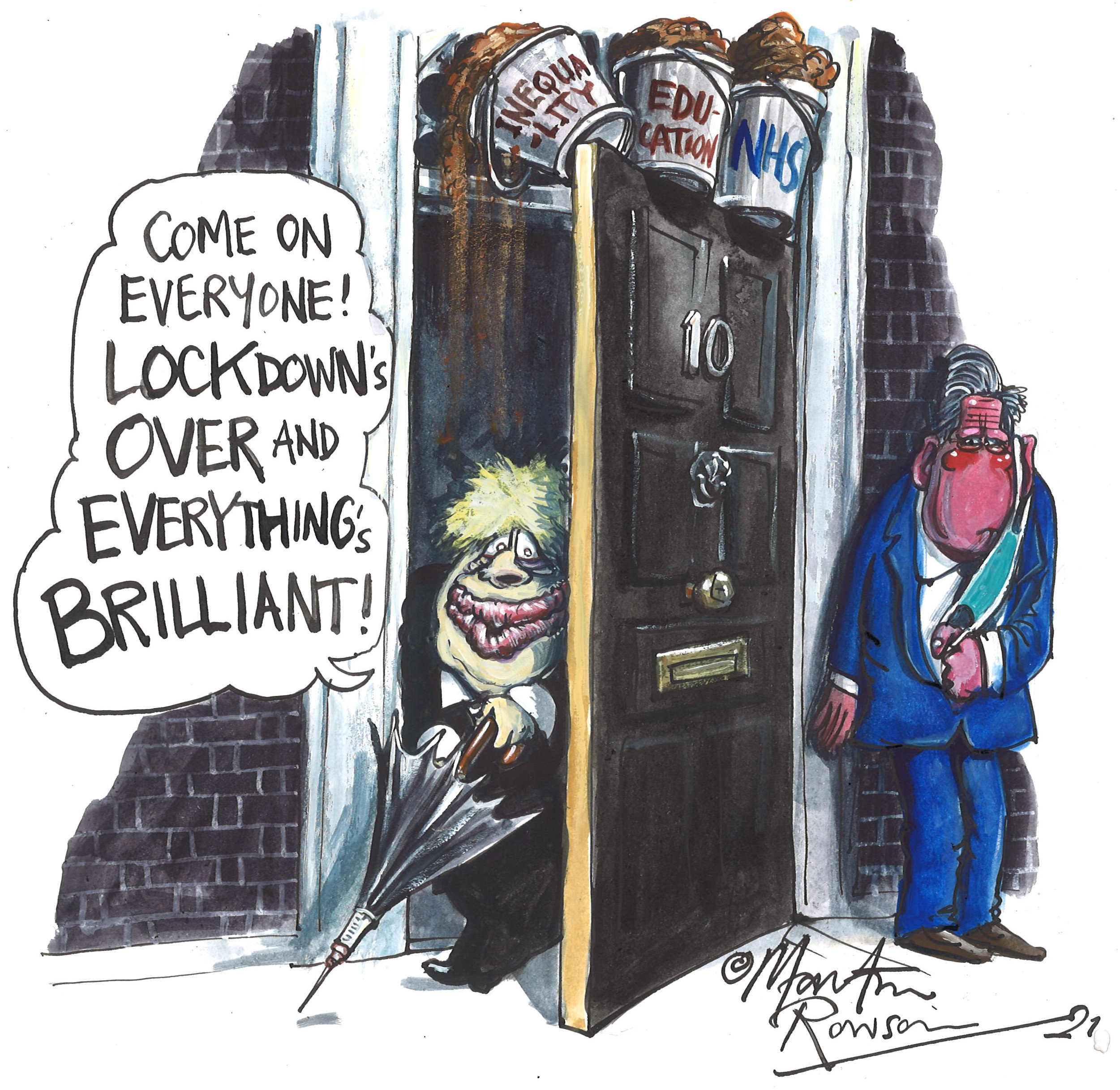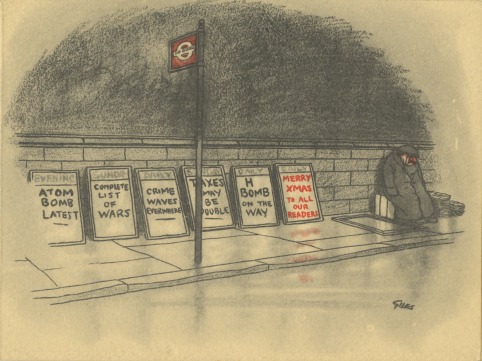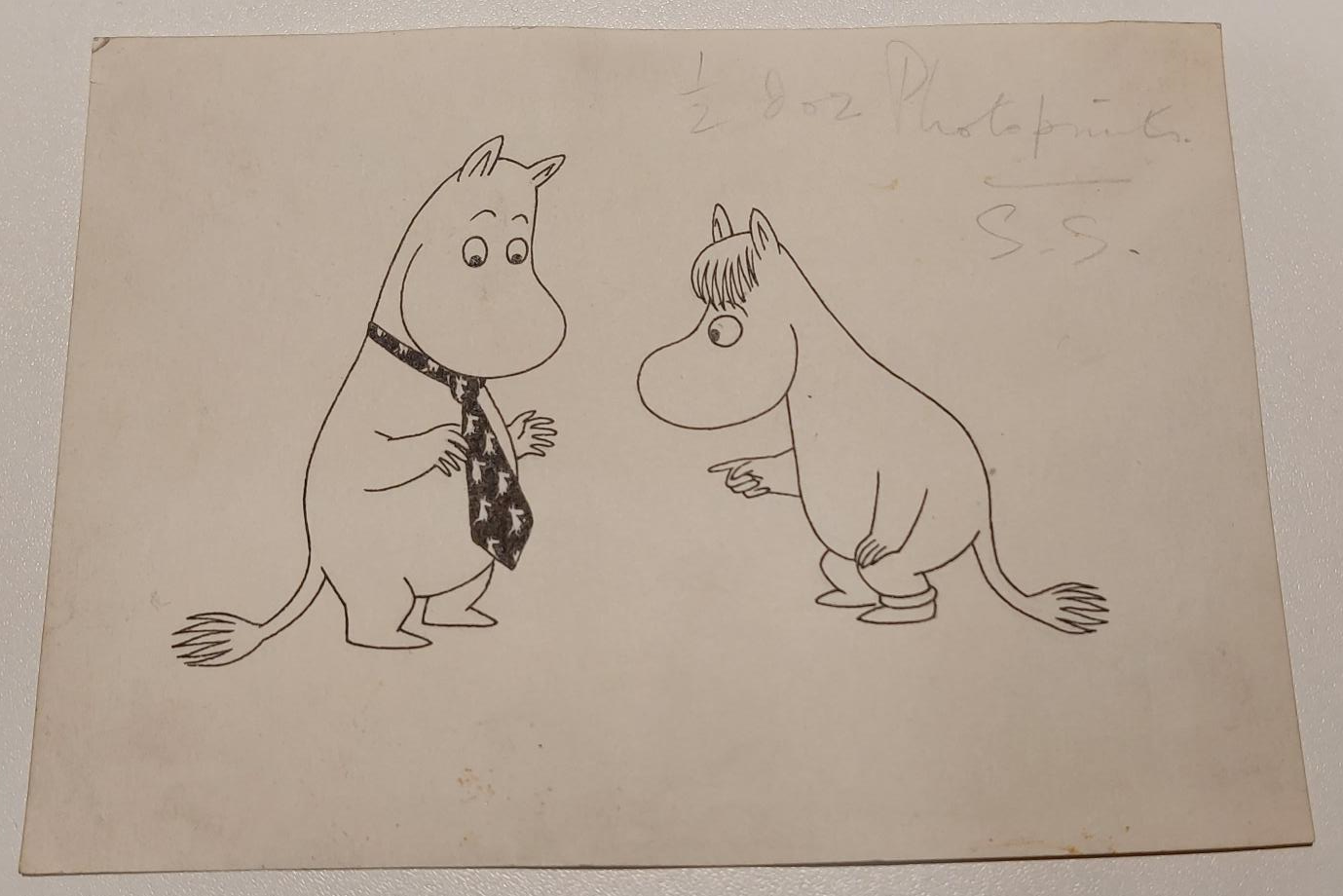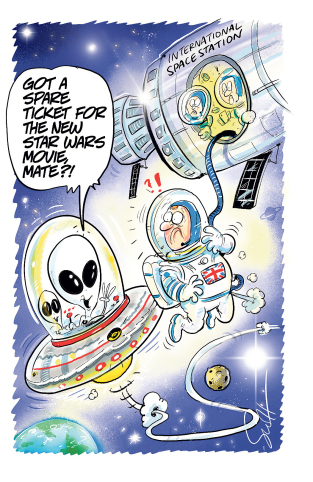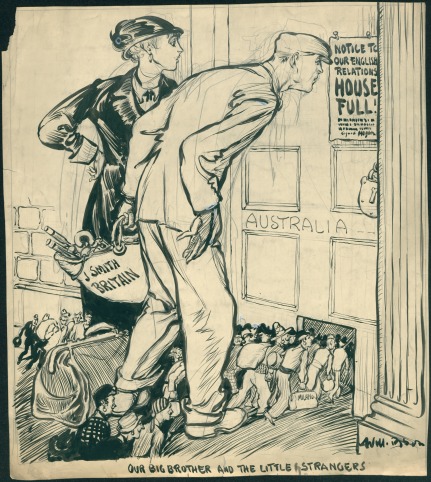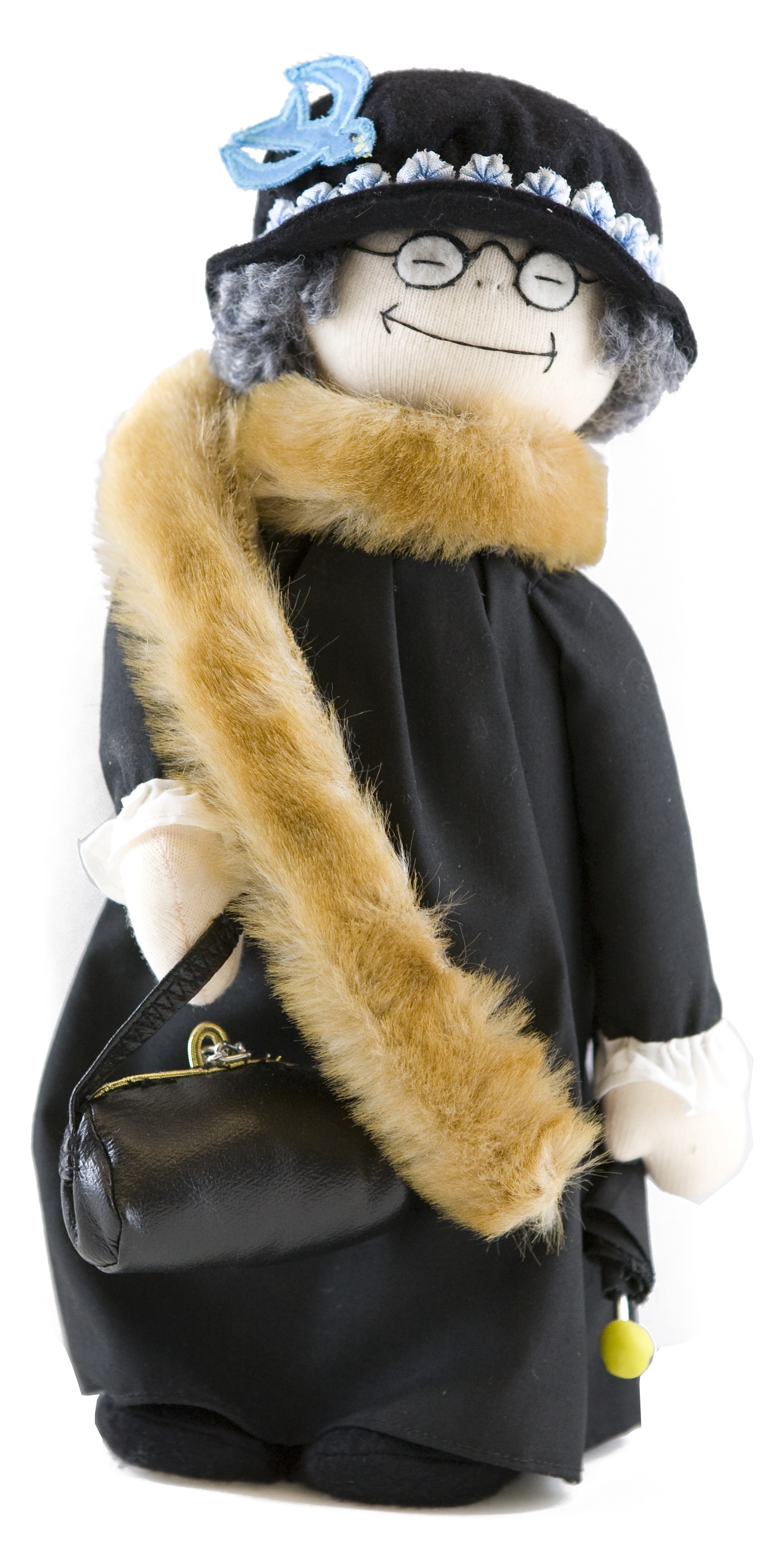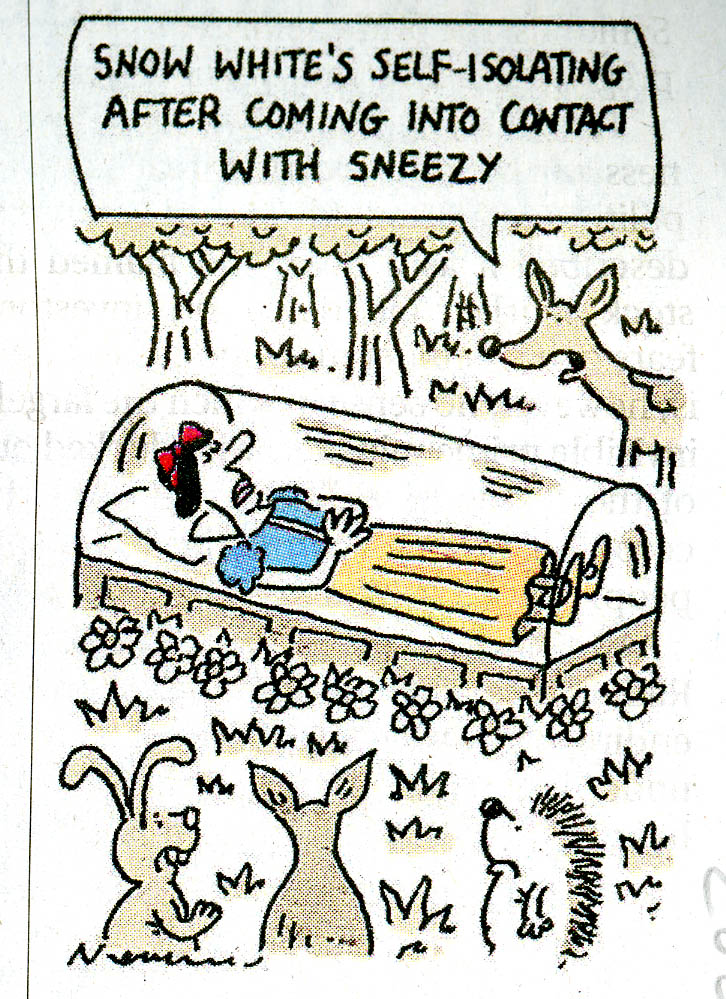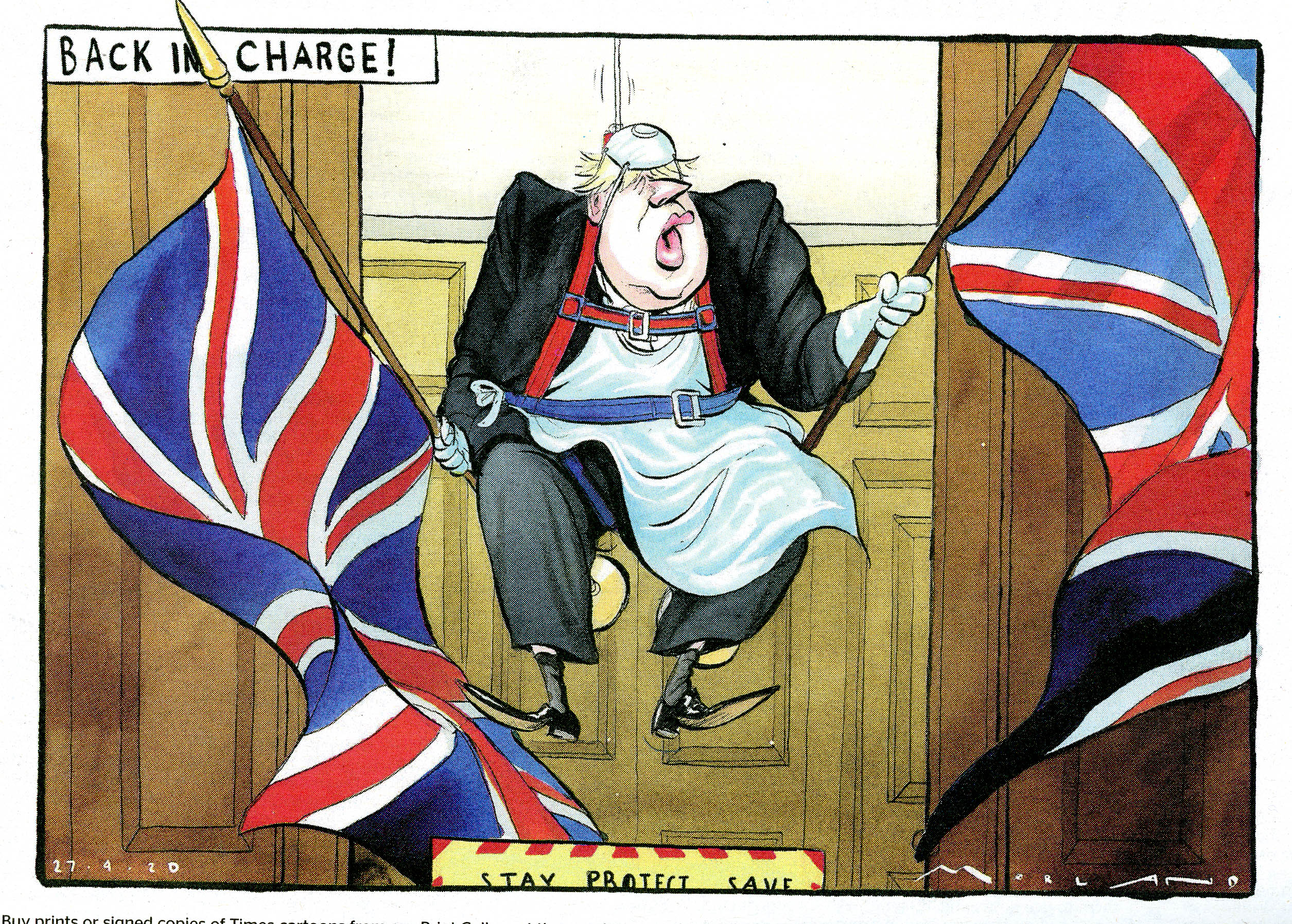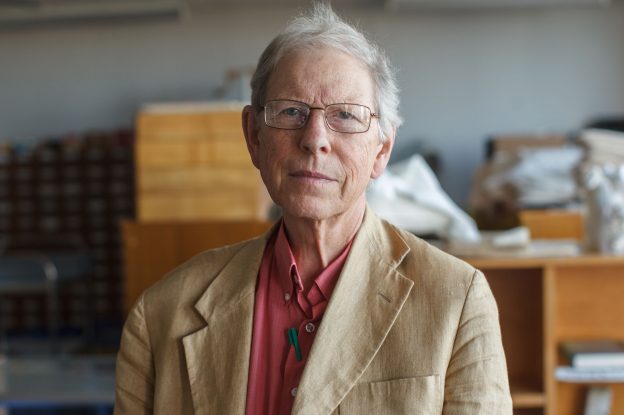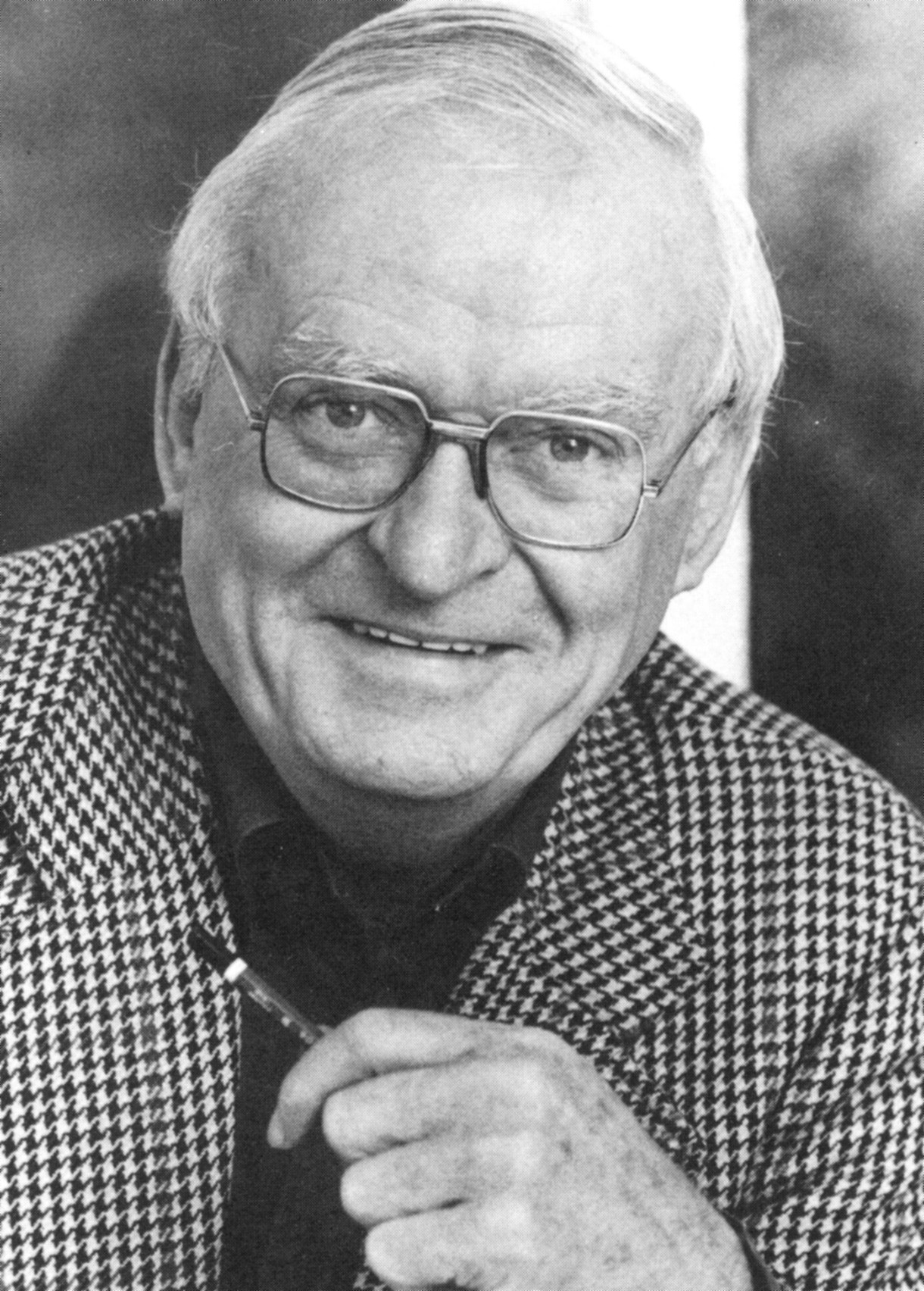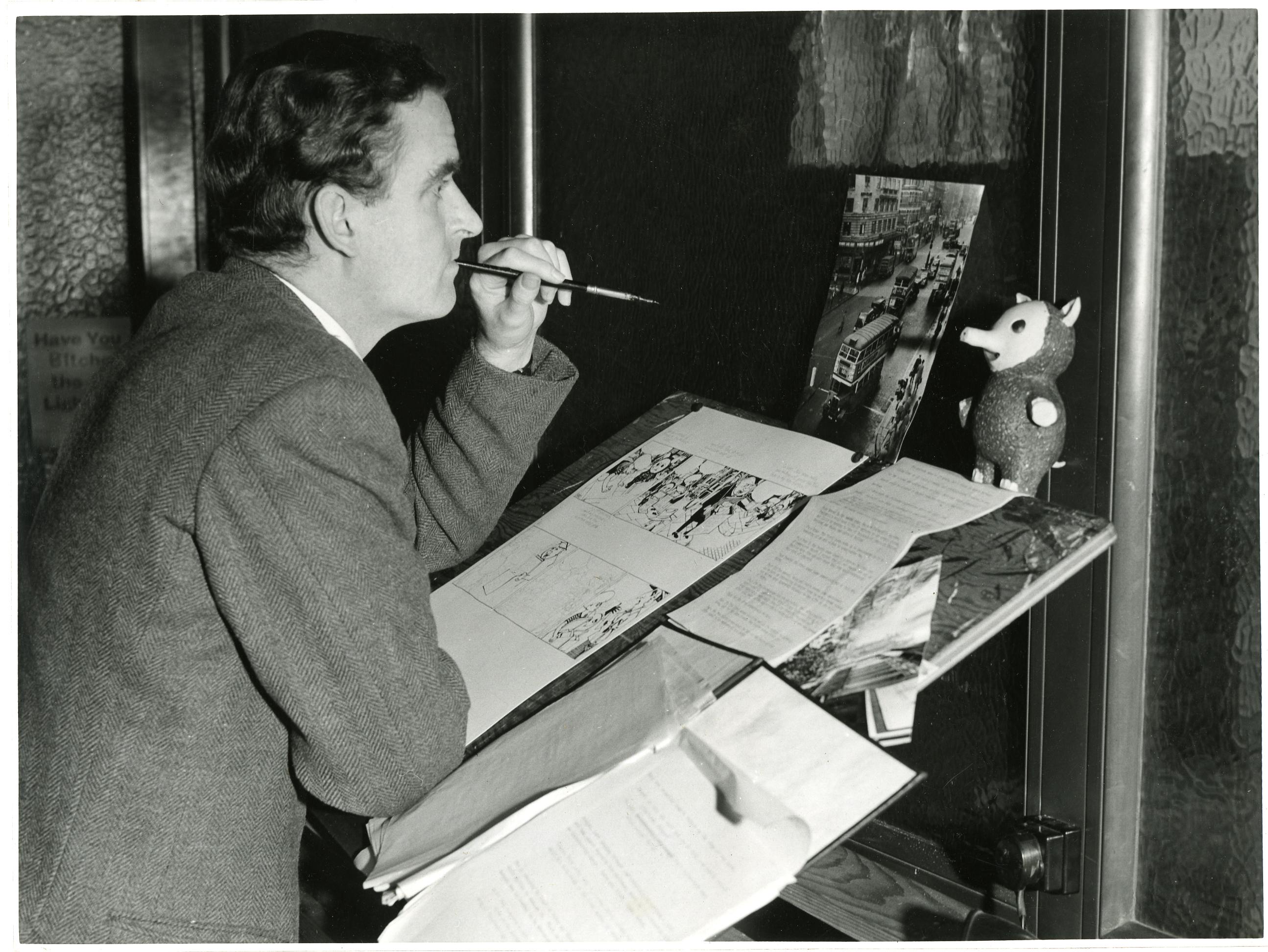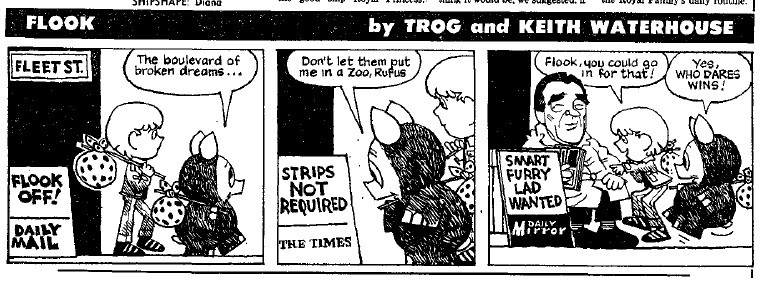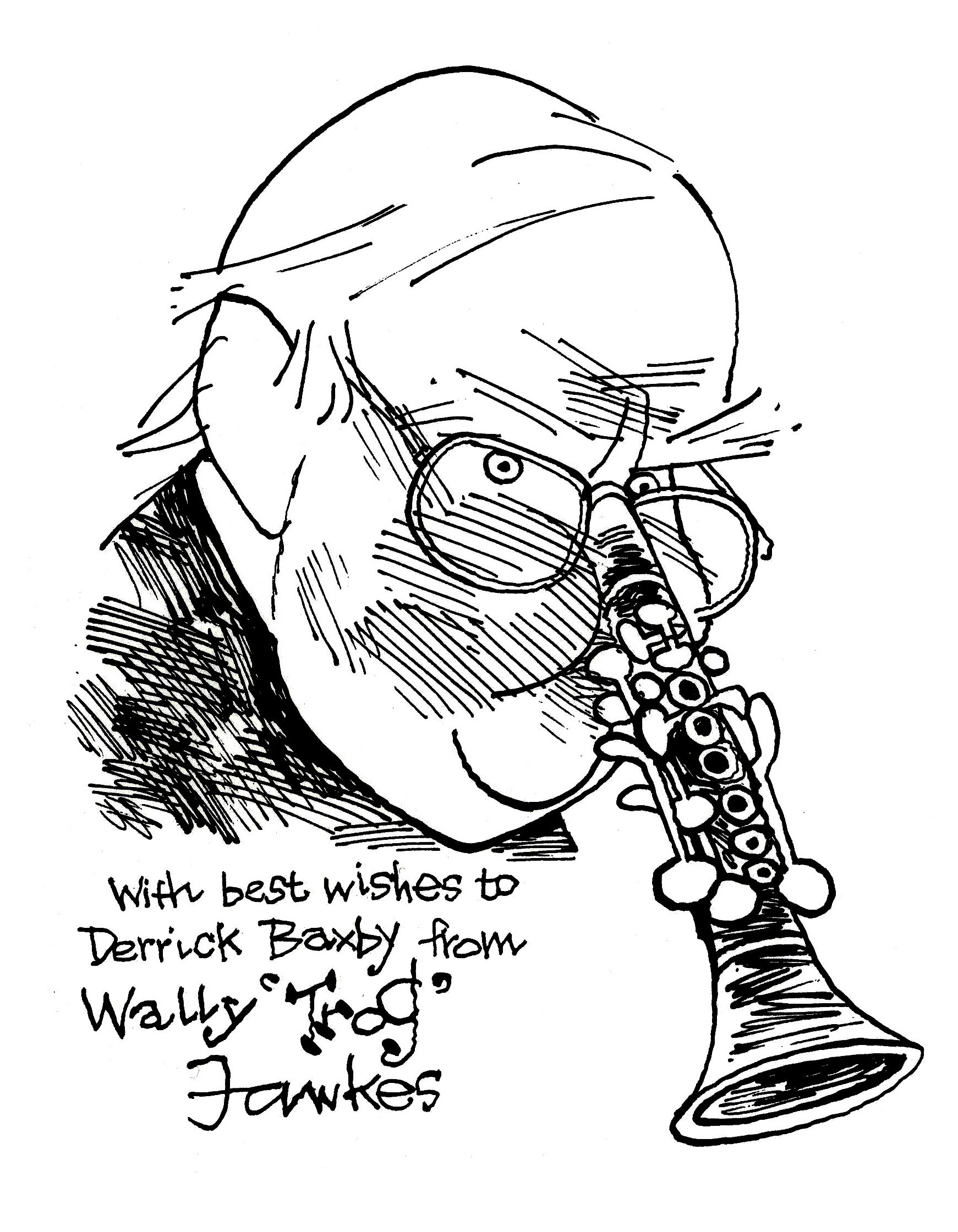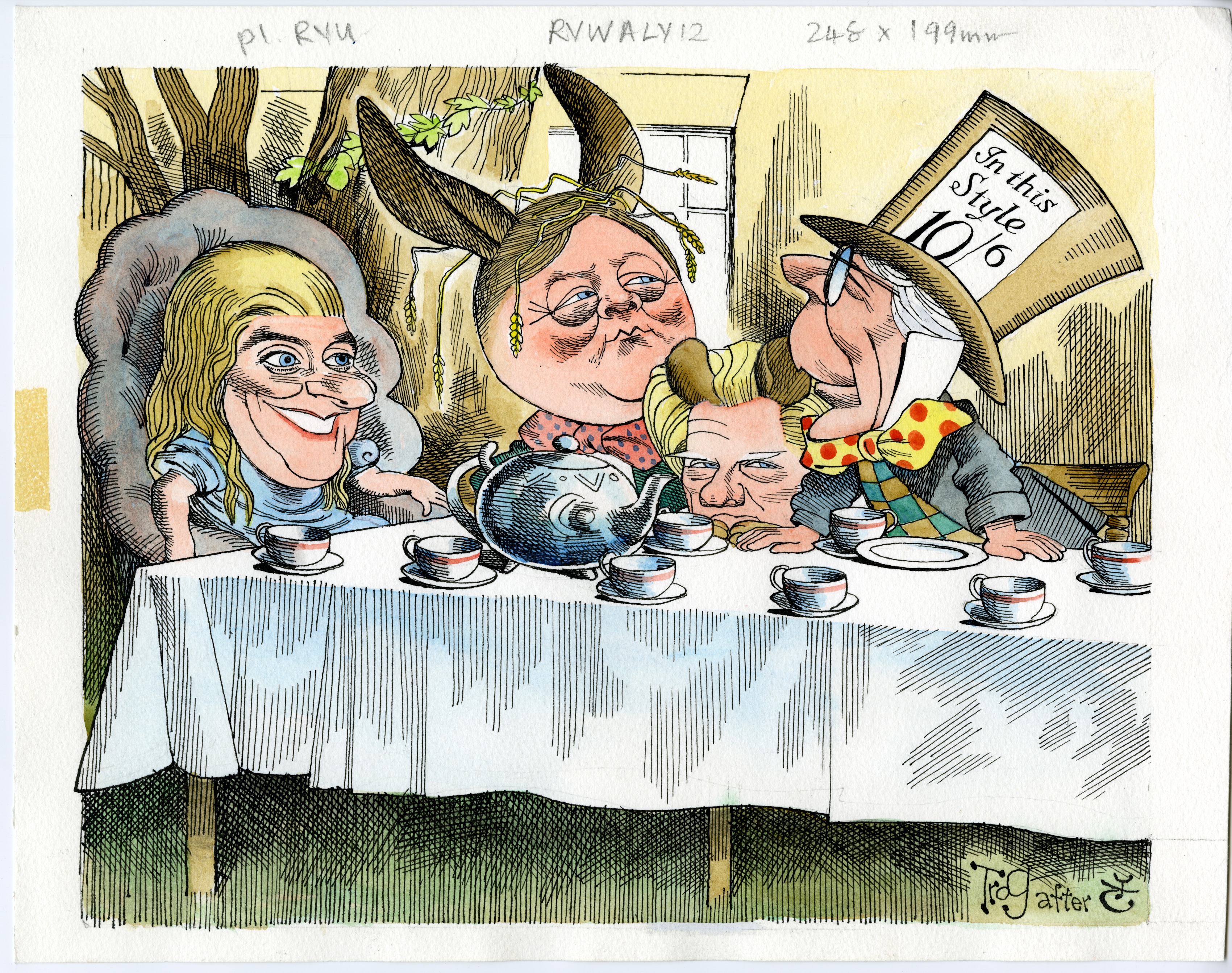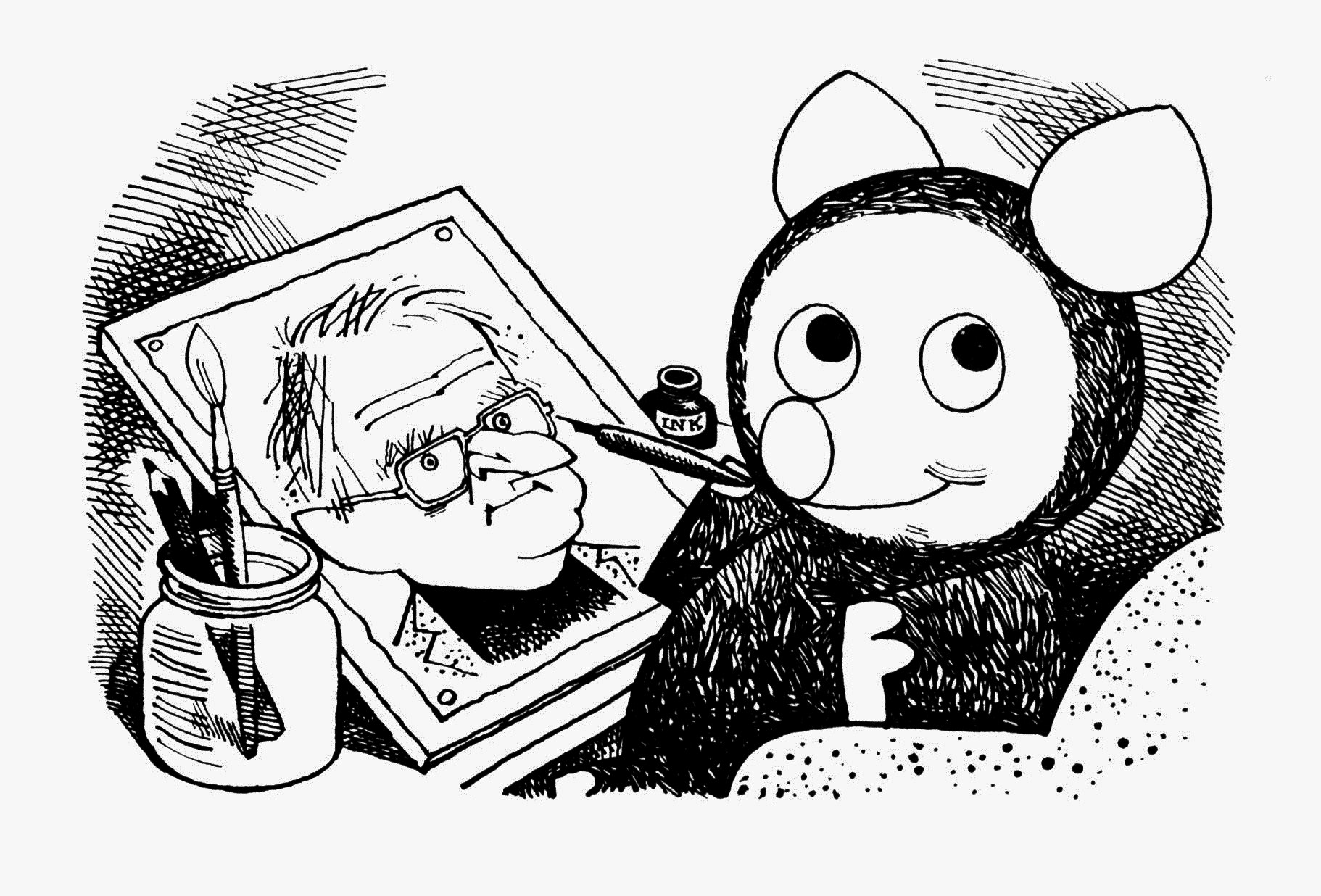With the excitement of both the Euros and Wimbledon, sports fever has gripped Special Collections and Archives, so we thought we’d explore how the two sports have been represented in cartoons across the decades and open the reading room for a free drop in this Friday 12th July to showcase some of the incredible artworks we hold. Read on for a sneaky preview of the cartoonists whose work will be on display!
Tom Webster (1886-1962)
Tom Webster specialised as a sports cartoonist and pioneered his characteristic “running comment” cartoon style in response to the growing popularity of press photography; “I saw the red light,” he later recalled, “and realised that I had to find something the camera could not do”. After serving as a Lance Corporal in WWI, including action in the Battle of the Somme, he joined Northcliffe’s London Evening News as a sports cartoonist in 1918, and transferred to its sister paper, the Daily Mail, in 1919. His narrative cartoons began life at the sporting events themselves, where he would draw rapidly in pocket sketchbooks, and it proved quite a feat to meet the deadline for the next day’s paper. Equipped with his reference material, Webster explained, “I have to settle the sequence of the episodes, work up to the climax of my comic story, and pencil the whole thing in, within half an hour. This leaves me about three-quarters of an hour for finishing in ink.’ His cartoons were so popular that the Daily Mail provided Webster with a chauffeur-driven Daimler, fitted with an easel, so that he could start drawing on the way back from sporting events to the office. By 1924 he was reputedly the highest-paid cartoonist in the world.
Webster played golf with Herbert Chapman, manager of Arsenal Football Club, and supposedly inspired him with his habit of wearing a red sleeveless sweater over a white shirt to redesign the club’s red shirts in 1933 to incorporate their trademark white collar and sleeves. According to Webster’s family, he produced the design himself, and was rewarded with a shirt signed by the players on the sleeves and the directors on the collar. Webster covered plenty of football matches over the course of his cartooning career, and one player that features frequently in our collection is Charlie Buchan (1891-1960). Buchan started his career with Woolwich Arsenal (as it was then) in 1909, and – following a successful career with Sunderland – returned to Arsenal in 1925, seeing the club to their first FA Cup final in 1927. Webster seemingly makes much of the striker’s height!
Another notable sports personality of the early 20th century was French tennis player Suzanne Lenglen, the inaugural world No. 1 from 1921 to 1926. Invariably drawn with her short black bob and coloured bandeau, Webster seems less concerned about reporting on her skill, however, than he does in implicating her femininity. One can recognise the same trait in Webster’s contemporary, W. K. Haselden, in whose abstract cartoons about tennis a recognisably similar woman appears.

Champion of the world. Weekly Dispatch (20 November 1926) – British Cartoon Archive, Tom Webster TW1292
William Haselden (1872-1953)
A self-taught artist, Haselden is principally known as a social cartoonist and he had a steady career with the Daily Mirror from 1904 until his retirement in 1940. He worked with pen and Indian ink on board and developed a special multi-frame format, usually of six images, as his trademark style. He was known to use real people as the models for his cartoons, and his female tennis players often bear a striking resemblance to Suzanne Lenglen (see Tom Webster). His cartoons often satirise social expectations with regard to femininity and fashion, and he defends the short skirt as a pragmatic dress choice for tennis by contrasting it with an array of ridiculous alternatives – from swaddling gowns to custom-made bare leg protectors.

If dresses are to be worn longer. Daily Mirror (8 September 1921) – British Cartoon Archive, William Haselden WH3380

Bare legs at Wimbledon. Daily Mirror (31 May 1929) – British Cartoon Archive, William Haselden WH4320
Asides from tennis, it’s also interesting what Haselden’s cartoons can tell us about the history of women’s football.
Whilst testimonies exist about women joining in casual community football alongside men as early as the 15th century, the first recorded match (between England and Scotland) wasn’t until 1881. Women’s football really took off during WWI, in fact it was reported that every town in England developed a women’s team. Naturally, when professional football resumed for men’s teams when the war ended, women’s football experienced an increased ideological backlash and legal action was taken to prohibit women from taking part in organised matches. In 1921, the FA implemented a countrywide ban on women’s football, which wasn’t lifted for fifty years. It is this context which we need to bear in mind when viewing Haselden’s cartoons. On 14th November 1925, the Daily Mail published Haselden’s cartoon about how rugby is – and ought to be – played. In response to contemporary complaints that the game is too rough, Haselden suggests that efforts to make the sport more genteel would risk emasculating the players. If men should conduct themselves like women on the pitch, how ironic is it, then, that women should be banned from the pitch?
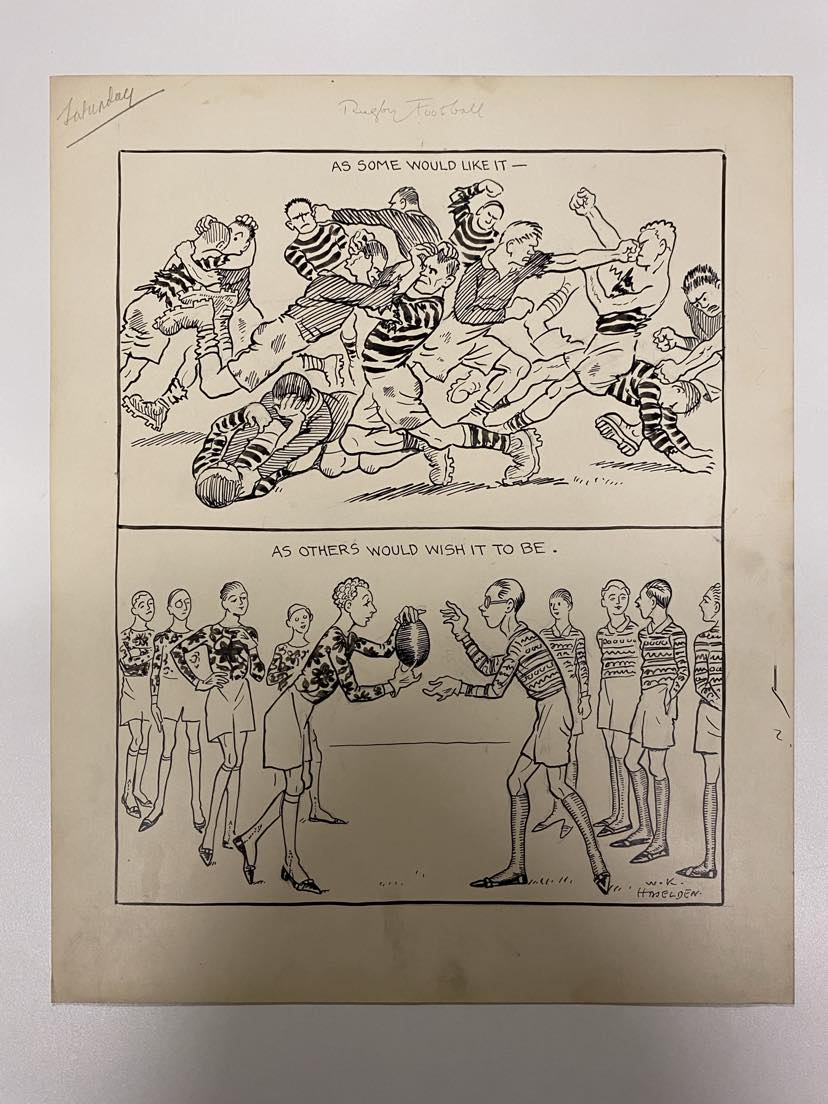
How to play rugby. Daily Mirror (14 November 1925) – British Cartoon Archive, William Haselden WH2589
Richard Willson (1939-2011)
Known principally as a caricaturist, Richard Willson can be said to have started his career proper in 1968 when he was taken on by The Observer. He started working freelance for The Times in 1971, contributing striking profiles for its Business Diary. His career involved freelance work for a wide range of publications, so it is difficult to know precisely which magazine or newspaper these caricatures may have been intended for. Amongst his sets of 80s and 90s sports personalities, Willson has captured footballers Gary Lineker and Vinnie Jones, and tennis players Björn Borg and Martina Navratilova. His fine, cross-hatched style with big heads on small bodies shows the influence of the American caricaturist David Levine; the artworks here have been done in ink and acrylic, which testifies to the spread of colour printing in newspapers since the days of Webster and Haselden.
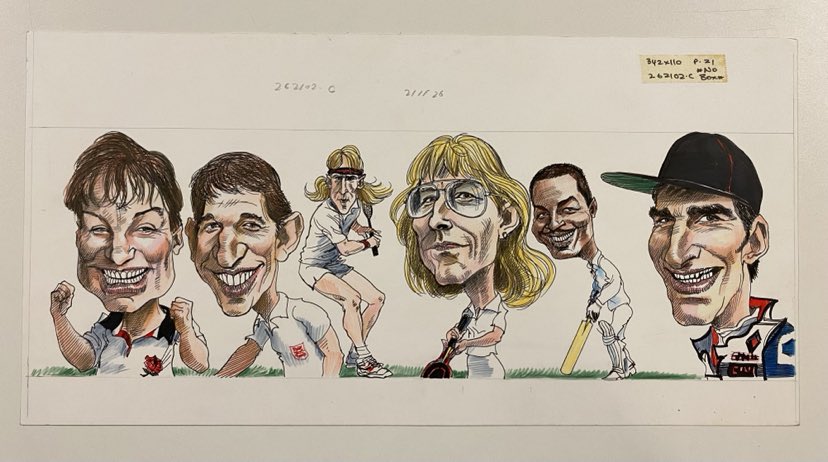
80s sports personalities (Rob Andrew, Gary Lineker, Björn Borg, Martina Navratilova, Brian Lara and Damon Hill) – British Cartoon Archive, Richard Willson RW0028

90s sports personalities (Will Carling, Mike Tyson, Michael Schumacher, Jonah Lomu and Vinnie Jones) – British Cartoon Archive, Richard Willson RW0027
Ron McTrusty (1948-2021)
Whilst Ron McTrusty started his career in 1970 as a magazine designer for Women’s Own and Women’s World, his significance for the British Cartoon Archive lies in his caricatures, and a number of notable sports personalities appear across our collection. To conclude this post, I leave you with the great Sue Barker, Tim Henman, Ian Wright and Glenn Hoddle. Come along on Friday to see even more!


